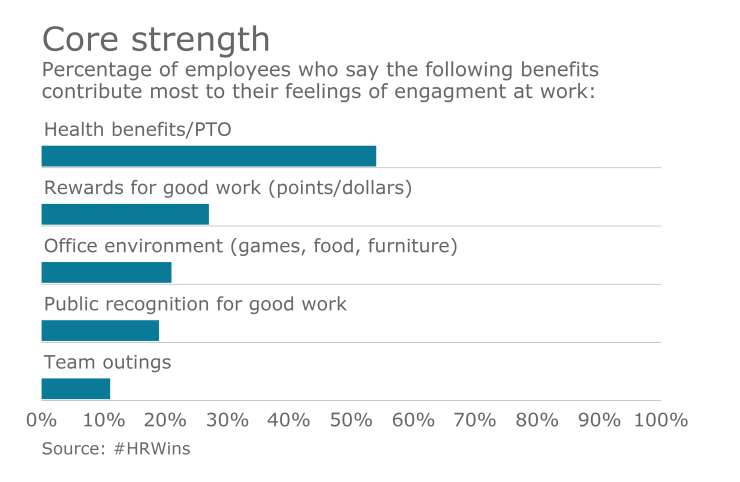The rise of data-based applications has brought about a new era for the HR department. Processes developed in the 1970s are now going through a transformation with tools for gathering more accurate reports based on people analytics. But what exactly can you do with this information?

The main objectives of every HR department are to boost engagement, lower turnover, provide effective training and development and attract great talent. Aside from turnover, these objectives are difficult to measure. How do you measure engagement or the effect of a training program? This is especially difficult when your company only tracks performance annually. Data based on continuous feedback is providing new answers. Here are four ways it can help your HR department:
1. Measure and track engagement
One way to gather data from your people is by sending out regular pulse surveys. The results allow your HR team to instantly gauge the general feeling in the office or toward new processes and changes to the work environment. A revealing Gallup study reported that companies that score in the top half of employee engagement have double the odds of success of those in the bottom half. In fact, those in the 99th percentile of engagement have four times the success rate. The more your HR department stays on top of these figures the better they can address low engagement with new initiatives.
The ability to aggregate the data collected from surveys furthermore allows your HR team to see change over time. Being able to report employee engagement rates based on real employee feedback makes it a more tangible metric for HR to track and report to other departments.
2. Get better insights into causes of turnover
Better data can help HR spot potential issues before they result in turnover. Aside from higher pay, the most commonly cited reasons for employee turnover, according to CareerBuilder, are not feeling valued (65%) and having few opportunities for advancement (45%). Ultimately this all comes back to how effective your leaders are at keeping their employees engaged.
Simply reporting low engagement levels to managers isn’t enough. By analyzing upward feedback, HR can identify top performing leaders and their best practices. This information can then be used to devise training programs around the leadership skills that have proven to be most effective and match lower performing managers with peer coaches.
It can furthermore be useful for identifying the next generation of managers. A common mistake many companies make is promoting people with the best technical skills to management positions. Not everyone is cut out to be a manager. In fact, Gallup alarmingly found that companies choose the wrong person for the job 82% of the time. What’s more, Deloitte reported that 71% of employees who were likely to leave their jobs in the next two years were unsatisfied with how their leadership skills were being developed. Keeping track of employees who demonstrate great leadership skills will help fill this gap.
3. Develop a feedback culture
Giving more feedback has proven to increase employee engagement, lower turnover, improve communication and help employees grow. However, only 65% of employees said they still want more feedback.
For HR, the key to helping your company develop a feedback culture is analyzing the amount and quality of feedback given per department and per team. Which departments are asking for feedback more often? Which are lagging behind? HR managers should receive feedback and behavior reports that identify potential gaps and needs. With this information, HR can then provide targeted training to teams that are struggling.
4. Attracting great talent
People analytics also can help you create better hiring and recruitment strategies. For example, having more accurate knowledge of the skill gaps within your organization allows you to create more targeted job ads by listing the exact skills your company needs, rather than hiring based on outdated job descriptions. For example, if you’ve identified a disconnect between the development team and other departments, you may be looking for employees who are skilled at being able to clearly communicate technical issues to non-technical teams. At the same time internal mobility is also made easier by having better knowledge of who is strongest in the relevant skill/position you’re hiring for.
Finally, having high engagement levels amongst your existing workforce greatly contributes to employer branding. Many job seekers are now relying on websites like Glassdoor and Indeed which provide a window into the development opportunities, benefits and the overall attitude of current employees to the company.





